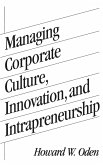Tackling head-on the problem of defining and managing an organizational image, especially in a crisis, Gray offers detailed guidelines for setting up a successful image program that communicates well with an organization's constituency. Through case studies, interviews with executives, and theory, he also examines how organizations have coped with enhancing and reshaping public perceptions. Association Management James G. Gray, Jr., deals directly with the problem of defining and managing the corporate image, especially in times of crisis. While examining the concept of corporate image, he offers detailed guidelines for establishing a corporate image program that communicates effectively with a corporation's various constituencies. Blending practical business case studies, interviews with business leaders, and public communications theory, he examines how companies like Atlantic Richfield, Johnson and Johnson, Sovran Bank, and Giant Food have coped with enhancing and reshaping public perceptions. Gray considers the role of management, media relations, employee concerns, community relations, consumer concerns, external visual image symbols (vital components of a corporate image program, as well as strategies of concern to business/government relations), corporate PACs, and lobbying. He clearly defines the publics of major concern to industry and offers guidelines for managing the corporate image with these publics. Finally, he offers a means of measuring the effectiveness and success of the image-making methods and concepts he proposes. This checklist is especially useful for assessing the value of existing programs and for establishing new ones.
Hinweis: Dieser Artikel kann nur an eine deutsche Lieferadresse ausgeliefert werden.
Hinweis: Dieser Artikel kann nur an eine deutsche Lieferadresse ausgeliefert werden.








